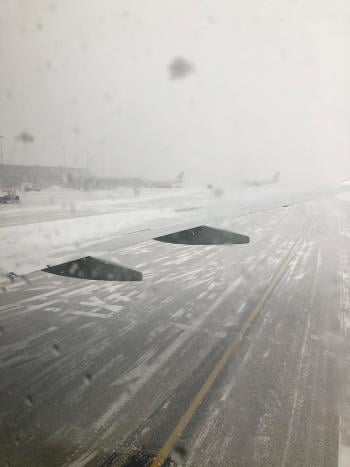Scandinavia And Canada Have Contributed Much To Winter Ops

Scandinavia and Canada, where winters are long and runways are often covered in snow, have led the way in researching better methods for quantifying anticipated runway braking action and the resulting effect on an airplane’s landing distance.
The first interest in accurately measuring and reporting compact snow conditions occurred in Sweden in 1948. One airport manager urgently needed to measure the runway’s friction because the facility had a 4,000-ft.-long runway with steep slopes on both ends. His team devised a method whereby a person driving a heavily loaded truck would accelerate to about 20 mph, apply full brakes (hopefully not at the ends of the runway) and record the stopping time and distance. Engineers converted these recordings into the runway’s friction.
Another airport manager in Sweden wanted a less time-consuming method. So, a team of engineers designed the Tapley Decelerometer and installed it in a car. The device performed admirably at measuring the friction in spots along the runway, but as those of you who have landed on dicey runways know, sometimes one portion of a runway might yield adequate braking while other portions are entirely unsatisfactory.
The Swedes did not rest on their laurels. They continued researching this area and found that a number of variables affect runway friction with compacted snow surfaces. For example, tires of different designs and pressures create divergent braking forces. And loose contamination such as snow or slush can yield unreliable friction values. Accordingly, the Swedish Civil Aviation Administration started a program to develop standardized procedures and specific tires to get friction measuring results that reasonably represented what transport category airplanes experience.
The first friction measurement device, the James Brake Decelerometer, was developed in England in the 1950s, and the Canadians quickly adapted it for their use. They developed a system to take measurements from the James Brake, convert them into a useful index number, and post those in flight manuals to help pilots determine corrected landing distances.
Late that decade, the Mu-Meter also was developed in England as a side-force measuring instrument primarily used for wet runways, but it was subsequently used on winter runways as well. Swedish engineers developed the BV-11 Fixed Slip Skiddometer around the same time. This trailered device was used on wet runways and those covered with snow and/or ice.
Transport Canada’s Transportation Development Center examined a wide range of ground friction measurement devices used by different countries and the large number of differing procedures in measuring winter surface friction. Its extensive work found the frictional values reported by the various equipment differed substantially. In fact, the same model of equipment reported highly scattered frictional data.



